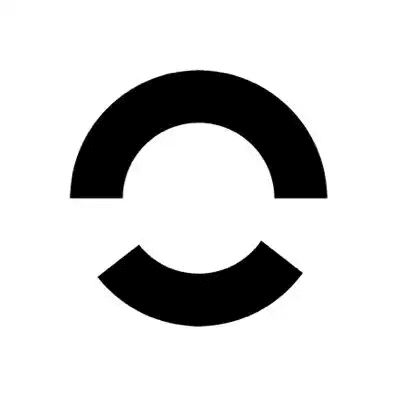Teltlk Pi Network: A New Era in Decentralized Communication

Concept Introduction
The fusion of blockchain technology with traditional communication platforms is ushering in a new digital paradigm. Teltlk Pi Network exemplifies this convergence by combining decentralized telecommunication ambitions with the economic potential of the Pi Network’s cryptocurrency system. Both projects target the creation of a secure, accessible, and user-powered ecosystem for global communication and financial engagement, particularly for mobile-first users and underserved markets.
Historical Background or Origin
Teltlk: Rethinking Communications
Teltlk emerged as a visionary response to concerns over centralized control in communication technologies. In the traditional model, messages, calls, and user data funnel through corporate servers, making them susceptible to surveillance, censorship, and data breaches. As blockchain gained prominence, Teltlk pioneered efforts to distribute messaging, voice calls, and digital identities across a decentralized network, shifting control back to users by leveraging cryptographic primitives and peer-to-peer protocols.
Pi Network: Democratizing Cryptocurrency Mining
Conceived by a group of Stanford PhDs in 2019, Pi Network sought to make cryptocurrency mining accessible to everyone using a smartphone. Since mining early cryptocurrencies like Bitcoin increasingly required specialized hardware and high energy costs, Pi Network introduced a consensus algorithm (Stellar Consensus Protocol) inviting mass participation. Over time, the network surged to tens of millions of users mining Pi tokens by simply engaging daily via the Pi app. This democratized onboarding of otherwise technical users has created an enormous, diverse community eager for real-world applications for the Pi currency.
Working Mechanism
Teltlk’s Blockchain-Powered Communication
At its core, Teltlk deploys decentralized nodes — run by users and incentivized by token rewards — to transmit messages, encrypt voice data, and authenticate callers. It innovates beyond privacy, introducing overlays such as:
- End-to-End Encryption: Each message and call is encrypted on the sender’s side and only decrypted on the receiver’s device, preventing interception.
- Smart Contract Integration: Enables programmable interactions — for instance, automated payments for premium calls or subscription channels.
- User-Owned Digital Identities: Rather than registering with a phone number or email, users own unique blockchain addresses, verifiable and immune to centralized shutdowns.
Teltlk leverages Proof of Stake or Delegated Proof of Stake to validate communications, ensuring fast consensus and high throughput without massive energy expenditure.
Pi Network’s Economic Layer and Integration Prospects
The Pi Network’s mobile mining mechanism makes token distribution fair and broad-based. Pi tokens accrue as users log in and validate their presence daily. At the development phase known as "Open Mainnet," Pi Network is transitioning from an IOU system to an open blockchain where tokens are transferable and smart contracts executable.
Given Pi Network’s large user base, integrating something like Teltlk introduces new use-cases, such as:
- Microtransactions: Pi tokens can facilitate micropayments for advanced Teltlk communication features.
- Decentralized Authentication: Using Pi blockchain credentials simplifies secure logins on the Teltlk platform.
- Community Incentives: Teltlk can reward users with Pi for running nodes or referring new members.
Benefits or Advantages
Security and Privacy
With end-to-end encryption and decentralized routing, Teltlk offers enhanced privacy over conventional apps. Blockchain-backed authentication thwarts identity theft and spoofing, while users retain ultimate control of their data.
Accessibility and Financial Inclusion
By merging Pi’s mobile-first currency with Teltlk’s communication protocol, the barrier to entry is dramatically lowered. Anyone with a smartphone can communicate securely and participate in the digital financial ecosystem without needing high-powered computers or bank accounts.
Monetization for All Participants
Token incentives on both networks mean users — not just network operators — can gain from their participation. For example, a user hosting Teltlk nodes or actively engaging in Pi’s mining app could earn tokens, unlocking new opportunities for income and service access globally.
Censorship Resistance
Decentralized networks make it almost impossible for single governments or corporations to shut down or censor communication. Teltlk and Pi together empower activists, entrepreneurs, and ordinary users in restrictive environments to connect freely.
Synergy for Developers
Smart contract support and a large ready user base mean dApp developers have fertile ground for innovation. From decentralized ID verification services to encrypted file sharing, blending Teltlk and Pi unlocks a robust ecosystem for web3 applications.
Conclusion or Future Outlook
The intersection of Teltlk and Pi Network signals an exciting frontier for both communication and finance on the blockchain. With millions of mobile users ready to engage, the combined ecosystem promises to offer privacy, accessibility, and empowerment like never before. As decentralized identity, smart contracts, and incentivized participation mature, Teltlk Pi Network could redefine how the next billion users communicate and transact online. Platforms like Bitget Exchange offer deep liquidity for new blockchain tokens, while Bitget Wallet stands out for users seeking secure, seamless Web3 onboarding. Early adopters in this rapidly developing space are positioned to benefit from both technological advances and economic incentives, shaping the evolution of digital communication for years to come.






















